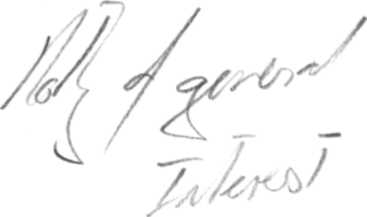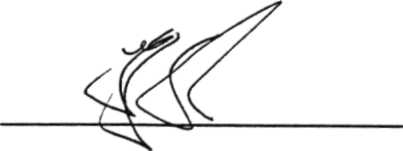CASE NO. I .3349/96
I
N THE HIGH COURT OF NAMIBIA
In the matter between
BELINDA NAOMI CLOETE
versus H A GEORGE
CORAM: FRANK, J.
Heard on: 1996/09/26 & 1996/11/15 Delivered on: 1996/11/25
PLAINTIFF
RESPONDENT
JUDGMENT
FRANK, J. : The plaintiff's vehicle was damaged in a
collision with another vehicle on 5th February, 1994. As a result she suffered damages to the tune of N$ll 817.05. She issued summons against the defendant to recover her damages claiming that the collision was caused by the sole negligence of the defendant. The defendant in turn issued a third party notice to the driver of plaintiff's vehicle at the time of the collision averring that this driver's negligence was the sole cause of the collision.
The collision occurred during the early evening in Ausswartz Street at a point close to where Ausswartz Street crosses Rooivalk Street. At this intersection there is stop signs necessitating traffic from Ausswartz Street to stop prior to proceeding on its way. If one approaches this intersection from the east driving in a westerly direction one passes over a small hill and descends fairly straight down the hill to the intersection and the stop signs. Ausswartz Street is a tarred road with a solid barrier line demarcating the areas reserved for the dual traffic it allows in opposite directions. On the shoulder on either side is a yellow barrier line prohibiting traffic to enter from the sides. When travelling in a westerly direction and after clearing the hill there is a residential area to the north. The houses do not however stretch up to the shoulder of Ausswartz Street. There is an open unbuilt area immediately adjacent to Ausswartz Street. At the time of the collision there was a small road created by persons coming from the residential area which ran up. to the northern side of Ausswartz Street. This was not a proclaimed road but was tracks made on the open surface by persons who unlawfully gained access to Ausswartz Street in this manner. The witnesses referred to this road as a false road. Some time subsequent to the collision an embankment was created at the place where this road entered Ausswartz Street to prevent traffic from using this road. If one turns on to Ausswartz Street from this false road to travel in a westerly direction one crosses the yellow barrier line and the solid barrier line demarcating the street into the two sections indicating the respective areas reserved for the normal dual traffic in opposite directions.
According to the driver of plaintiff's vehicle he was proceeding in a westerly direction along Ausswartz Street when he noticed lights appearing from his rear followed by screeching brakes and the next moment he was hit from behind with such force that the back of his seat broke. After he had come to a standstill he was confronted by the defendant who wanted to know why he turned in in front of him which he denied. He says that defendant was driving at an excessive speed. On his version defendant crossed the hill at an excessive speed, saw the vehicle of plaintiff too late and thus drove slam into the back of it.
According to the defendant he was proceeding in a westerly direction along Ausswartz Street at a speed between 80 and 90 kph which was admittedly above the legal limit of 60 kph. As he crossed the hill he saw a car approaching Ausswartz Street from the false road. He assumed this car would stop before entering Ausswartz Street and he continued on his way. This car did not stop and turned into Ausswartz Street across both the yellow and centre barrier lines to also proceed in a westerly direction directly in front of him. He hooted, immediately applied his brakes but it was too late and he struck this car from behind. He confronted the driver of the other car for turning onto his path and the attitude of this driver was that they should settle the matter in an amicable fashion. A person who was a passenger in his vehicle at the time in essence supported the version of defendant.
It is self-evident in my view that if the version of the driver of plaintiff's car is to be accepted then there is no question that defendant's sole negligence caused the collision. Conversely if the defendant's version is accepted I am of the view that this establishes that the collision was caused solely due to the negligence of the driver of plaintiff's vehicle. This latter conclusion needs some amplification. The question of defendant's prior knowledge of the area where the collision occurred was not canvassed with him at all during his evidence. I am thus bound to accept that he was not aware of the false road prior to the collision and the inherent dangerous situation it might have created and which he should have foreseen. Likewise the manner in which the car allegedly on the false road approached Ausswartz Street was not taken up with him. I must therefore also accept that the manner of approach of this car was not such as to arise any suspicion that it would not stop. He was thus entitled to assume that this vehicle would stop (Griffiths v Netherlands Insurance Co of SA Ltd, 1976(4) SA 691 (A) at 697 B - C.) Because of this the fact that he drove at a speed above the legal limit is of no consequence as this speed did not contribute to the eventual collision nor can it be said that the speed in itself constituted negligence. To suggest that he should have swerved to his right across the barrier line onto the lane for oncoming traffic to avoid the collision is not acceptable. In the split second he had to react his instinct made him attempt to go left which is normally the safer route and his failure to first see whether there was indeed oncoming traffic cannot, in my view, be said to constitute negligence in the present matter. This failure was the kind of error of judgment (if it was an error at all) which any reasonable motorist could have committed faced with a sudden emergency. (Griffiths case, supra, at 698 F and Mfihlo v Port Elizabeth Municipal Council, 1976(3)
SA 183 (SE) at 184 G - 185 F.)
The third party is the father of the plaintiff. According to plaintiff her father stayed with her at the time but despite this she had no knowledge what her father did that afternoon. According to the third party he was on a round delivering vegetables. It is highly unlikely that plaintiff would not have known about this. According to the third party there were vegetables strewn on the road at the location of the collision. None of the other witnesses saw this and this can also not be seen on the photographs taken shortly after the collision. The third party explained his route that afternoon to effect the vegetable deliveries so as to establish that he was not in the vicinity of the false road and thus did not use it. He said he still had the documentation available relating to the deliveries to corroborate his route. After an adjournment of nearly two months he explained that these documents got lost and he could no longer find it. Whether this is the truth or not is hard to tell. Apart from these general criticisms the third party did not make a bad impression on me.
As already indicated defendant and his witness in essence corroborated each other. None of them made a bad impression on me either. This does not mean their evidence is beyond criticism. Defendant was clearly not open with the Court as to why he removed his vehicle to his house from the scene and why he waited so long to report the matter to the police. The defence witness was clearly biased in favour of the defendant as was apparent from his lie to the defendant's insurance company to the effect that defendant's speed was within the legal limit at the time.
As the demeanour of the witnesses cannot play any part in deciding this matter it is only the probabilities that need be considered. In my view the probabilities favour the version of the defendant for the following reasons:
(i) The damage to the back of plaintiff's vehicle is
consistent with both the versions of defendant and the
third party;
(ii) the point of impact is at a point consistent with the
version of the defendant, i.e-. on the left side of the
road if one faces in a westerly direction just past the
point where the false road joins Ausswartz Street. It
is unlikely that this is a pure coincidence, especially
when considered in conjunction with the other factors
relevant to the probabilities;
(iii)The brake marks on the road is consistent with both versions;
(iv) It is unlikely that defendant would, with nothing obscuring his view, drive into the rear of the vehicle of the third party whose vehicle must have been visible for some distance. This is even more so if regard is had to the relatively short distance of the brake marks; and
(v) It is common cause that defendant immediately after the collision confronted the third party and wanted to know from him why he turned into Ausswartz Street in front of him. It is highly unlikely that he would have done this if it did not happen. I find it incredulous that he would at an instant, in the heat of the moment, come up with a false version that was consistent with all the objective facts, i.e. point of impact, existence of a false road, position of brake marks and length of brake marks.
In the result I issue the following order:

P

laintiff's claim against defendant is dismissed with costs;It is declared that the third party is solely liable for the full extent of plaintiff's damages;
The third party is to pay plaintiff's costs.
ON BEHALF OF THE PLAINTIFF: ADV C J MOUTON
Instructed by: A Vaatz
ON BEHALF OF THE RESPONDENT: ADV L C BOTES
Instructed by: p F Koep & Co